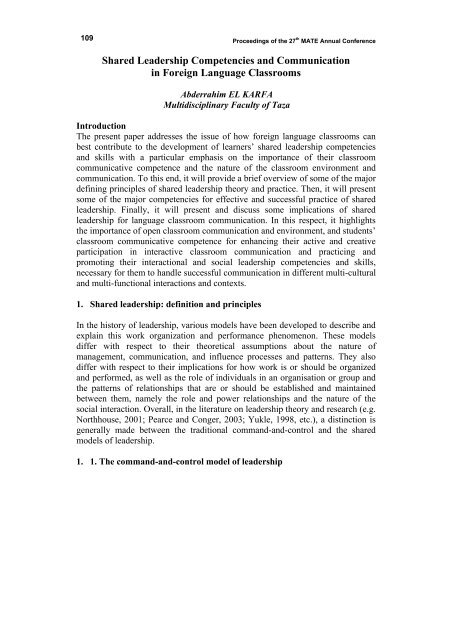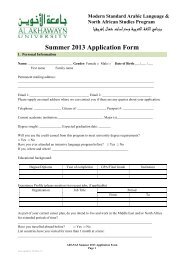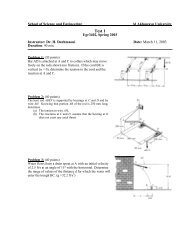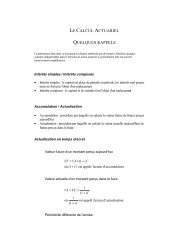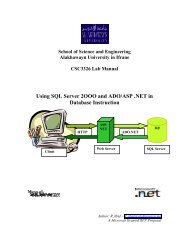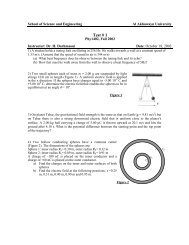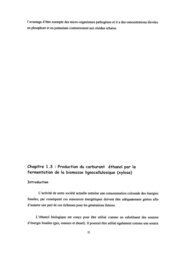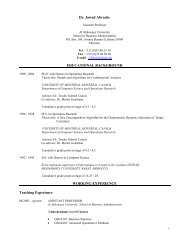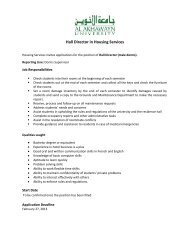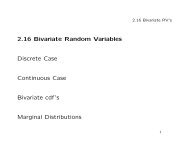Leadership and Values in Language Education - Al Akhawayn ...
Leadership and Values in Language Education - Al Akhawayn ...
Leadership and Values in Language Education - Al Akhawayn ...
- No tags were found...
You also want an ePaper? Increase the reach of your titles
YUMPU automatically turns print PDFs into web optimized ePapers that Google loves.
109Proceed<strong>in</strong>gs of the 27 th MATE Annual ConferenceShared <strong>Leadership</strong> Competencies <strong>and</strong> Communication<strong>in</strong> Foreign <strong>Language</strong> ClassroomsAbderrahim EL KARFAMultidiscipl<strong>in</strong>ary Faculty of TazaIntroductionThe present paper addresses the issue of how foreign language classrooms canbest contribute to the development of learners’ shared leadership competencies<strong>and</strong> skills with a particular emphasis on the importance of their classroomcommunicative competence <strong>and</strong> the nature of the classroom environment <strong>and</strong>communication. To this end, it will provide a brief overview of some of the majordef<strong>in</strong><strong>in</strong>g pr<strong>in</strong>ciples of shared leadership theory <strong>and</strong> practice. Then, it will presentsome of the major competencies for effective <strong>and</strong> successful practice of sharedleadership. F<strong>in</strong>ally, it will present <strong>and</strong> discuss some implications of sharedleadership for language classroom communication. In this respect, it highlightsthe importance of open classroom communication <strong>and</strong> environment, <strong>and</strong> students’classroom communicative competence for enhanc<strong>in</strong>g their active <strong>and</strong> creativeparticipation <strong>in</strong> <strong>in</strong>teractive classroom communication <strong>and</strong> practic<strong>in</strong>g <strong>and</strong>promot<strong>in</strong>g their <strong>in</strong>teractional <strong>and</strong> social leadership competencies <strong>and</strong> skills,necessary for them to h<strong>and</strong>le successful communication <strong>in</strong> different multi-cultural<strong>and</strong> multi-functional <strong>in</strong>teractions <strong>and</strong> contexts.1. Shared leadership: def<strong>in</strong>ition <strong>and</strong> pr<strong>in</strong>ciplesIn the history of leadership, various models have been developed to describe <strong>and</strong>expla<strong>in</strong> this work organization <strong>and</strong> performance phenomenon. These modelsdiffer with respect to their theoretical assumptions about the nature ofmanagement, communication, <strong>and</strong> <strong>in</strong>fluence processes <strong>and</strong> patterns. They alsodiffer with respect to their implications for how work is or should be organized<strong>and</strong> performed, as well as the role of <strong>in</strong>dividuals <strong>in</strong> an organisation or group <strong>and</strong>the patterns of relationships that are or should be established <strong>and</strong> ma<strong>in</strong>ta<strong>in</strong>edbetween them, namely the role <strong>and</strong> power relationships <strong>and</strong> the nature of thesocial <strong>in</strong>teraction. Overall, <strong>in</strong> the literature on leadership theory <strong>and</strong> research (e.g.Northhouse, 2001; Pearce <strong>and</strong> Conger, 2003; Yukle, 1998, etc.), a dist<strong>in</strong>ction isgenerally made between the traditional comm<strong>and</strong>-<strong>and</strong>-control <strong>and</strong> the sharedmodels of leadership.1. 1. The comm<strong>and</strong>-<strong>and</strong>-control model of leadership


